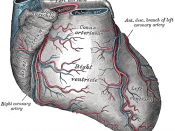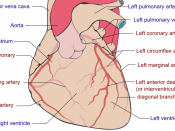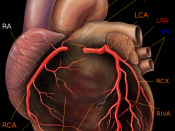Heart, Coronary Heart Disease And Effects Of Lifestyles
Heart is the one of the most vital organs in the entire body. It delivers essential substances to the cells of the body by means of pumping blood through the blood vessels with repeated, rhythmic contractions through a one way system of valves. Unlike other muscles, cardiac muscles never get rest. So they need continuous blood supply in order to continue working. Coronary arteries are the specific arteries that supply nutrients and oxygen to the heart itself. However, arteries can be damaged by a condition in which plaque builds up inside the coronary arteries Plaque has made up of fat, cholesterol, calcium, and other substances found in the blood. Plaque narrows the arteries and reduces blood flow to your heart muscle. It also makes it more likely that blood clots will appear in arteries (n.a, 2009). Blood clots can partially or totally block blood flow.
The condition in which plaque builds up inside the coronary arteries is called coronary heart disease. Coronary heart disease, also known as coronary artery disease, is one of the most common forms of heart diseases. Coronary heart disease is now the most common cause of death and a substantial source of chronic disability and health costs in the UK and all over the world. About 1 in 5 men and 1 in 6 women die because of this disease. Coronary heart disease cause 101 000 annually in the UK. As William Harvey demonstrated in 1628, blood circulates in one way round the body after being pumped by the heart with a one way system of valves. Mammalian heart is composed mainly of cardiac muscles which are specialised tissues that can contract automatically, powerfully and without fatigue through the life of the organism. Generally, all mammals and birds...


